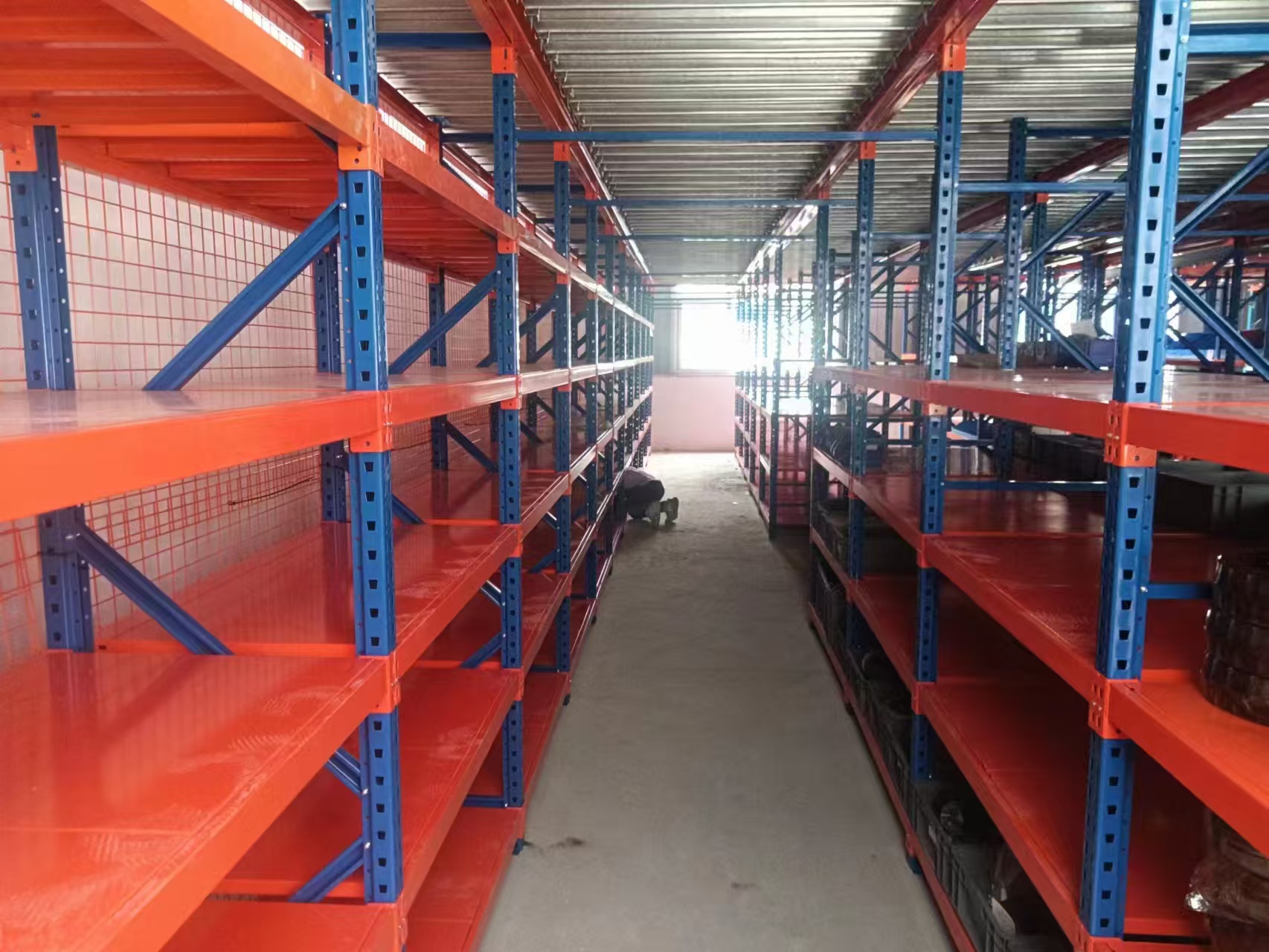In storage equipment, light to medium-duty stainless steel shelving stands out as an ideal choice for industries such as food, pharmaceuticals, and electronics due to its lightweight design, corrosion resistance, and versatility. This article will thoroughly analyze the practical value of this storage equipment, covering structural advantages, application scenarios, selection key points, and maintenance techniques.
1. Product Structure and Core Advantages
Basic Design
- Material: Made from Q235 stainless steel, featuring rust resistance, acid and alkali resistance, and easy cleaning properties, suitable for humid or clean environments.
- Components: Uprights, beams, shelves (with adjustable heights), and some models equipped with back mesh or side panels.
- Load Capacity: Single-layer load capacity of 150-800kg, with shelf heights typically ranging from 1.5 to 3 meters, supporting manual or small fork-lift access.
Core Advantages
- Hygienic and Safe: Seamless surface design to prevent bacterial growth and comply with hygiene standards in the food and medical industries.
- Flexible Layout: Modular assembly allows for height adjustments at 10cm intervals to accommodate different sizes of boxes and components.
- Aesthetic and Durable: The stainless-steel finish or brushed treatment maintains a clean appearance and resists aging and deformation over long-term use.
2. Typical Application Scenarios
- Food Processing and Catering: Storage of raw materials, semi-finished products, or tableware, withstands high humidity in cold storage and washing areas. Example: A bakery uses stainless steel shelves to store flour and tools, avoiding rust contamination.
- Pharmaceuticals and Laboratories: Storage of pharmaceuticals, reagent bottles, or lab equipment, resistant to alcohol and disinfectants. Shelves can be equipped with non-slip mats to prevent glassware from sliding.
- Electronics Manufacturing: Classified storage of small components and wiring, utilizing shelf dividers for refined management.
- Retail and Office: Storing daily necessities in supermarket backrooms or using in offices for document and sample display.
3. Key Selection Criteria: 5 Steps to Match Requirements
- Clarify Storage Goals: What type of goods? Is dust and moisture protection required? Will they come into contact with corrosive substances?
- Calculate Space and Load Capacity: Measure the usable area and aisle width in the warehouse, allowing for at least 80cm of fork-lift maneuvering space. Total weight of goods ÷ number of layers = minimum load requirement per layer.
- Choose Shelf Type:
- Flat shelves: Suitable for boxes and bagged goods.
- Mesh shelves: Enhance ventilation and facilitate cleaning (recommended for the food industry).
- Additional Functional Requirements: Do you need drawers, hooks, or mobile bases (like wheeled options for easy reconfiguration)?
4. Installation and Maintenance Guidelines
Installation Points:
- The floor should be level, with a slope of ≤ 2°, and install anchor bolts if necessary.
- Distribute goods evenly across shelves to avoid shifting the center of gravity.
Daily Maintenance:
- Cleaning: Wipe with a neutral cleaner, avoiding steel wool to prevent scratches.
- Inspection: Check connections monthly for looseness and replace any deformed shelves promptly.
- Collision Protection: Add crash barriers beside fork-lift aisles to protect shelf bases.
5. Industry Trends: Intelligent and Eco-Friendly Upgrades
Smart Adaptation: Pair with electronic tags (DPS) for rapid picking or connect to warehouse management systems (WMS) to monitor inventory.
Sustainable Development: Use recycled stainless steel materials to reduce resource consumption; dismountable designs extend the product lifecycle.
Conclusion
Light to medium-duty stainless steel shelving realizes significant value from a compact size, enhancing storage efficiency while meeting the stringent requirements of specialized industries. When selecting, it is essential to consider real scenarios and optimize configurations based on professional advice to maximize return on investment.
